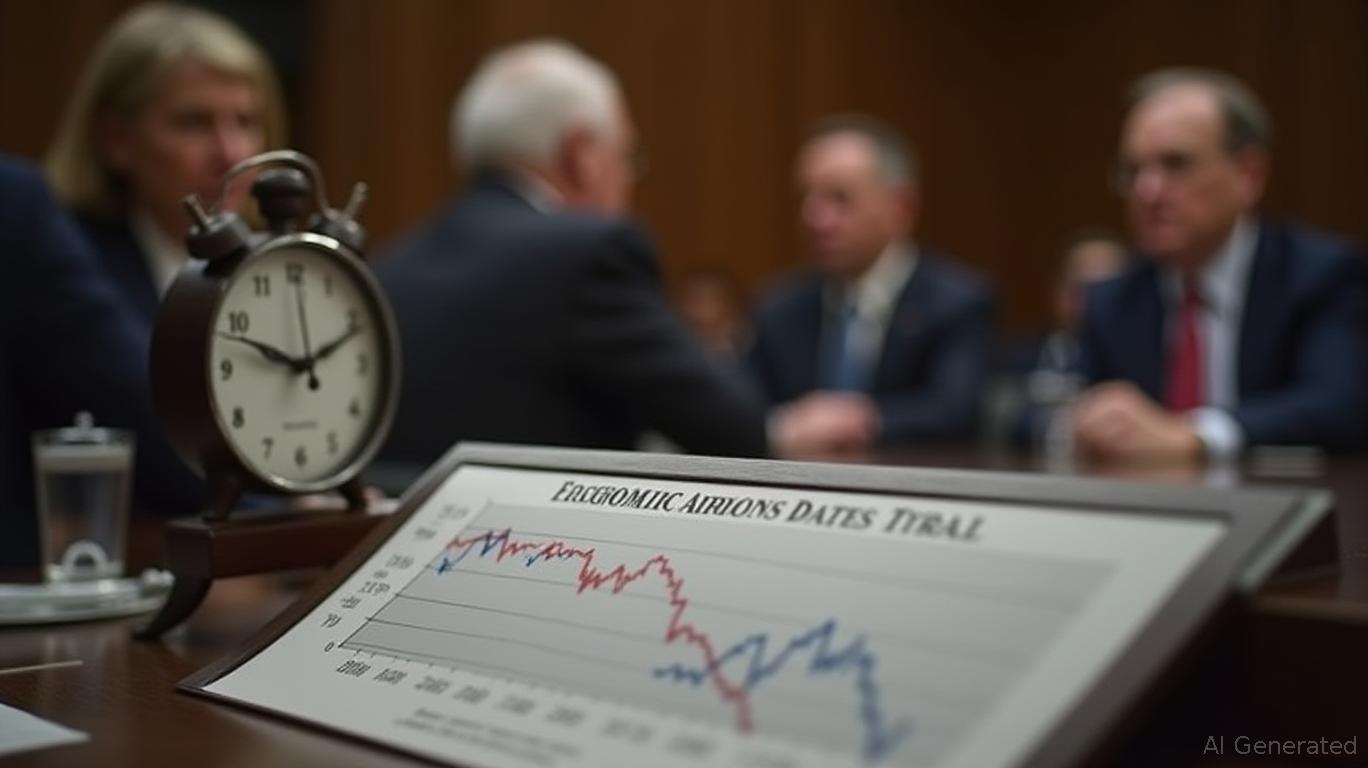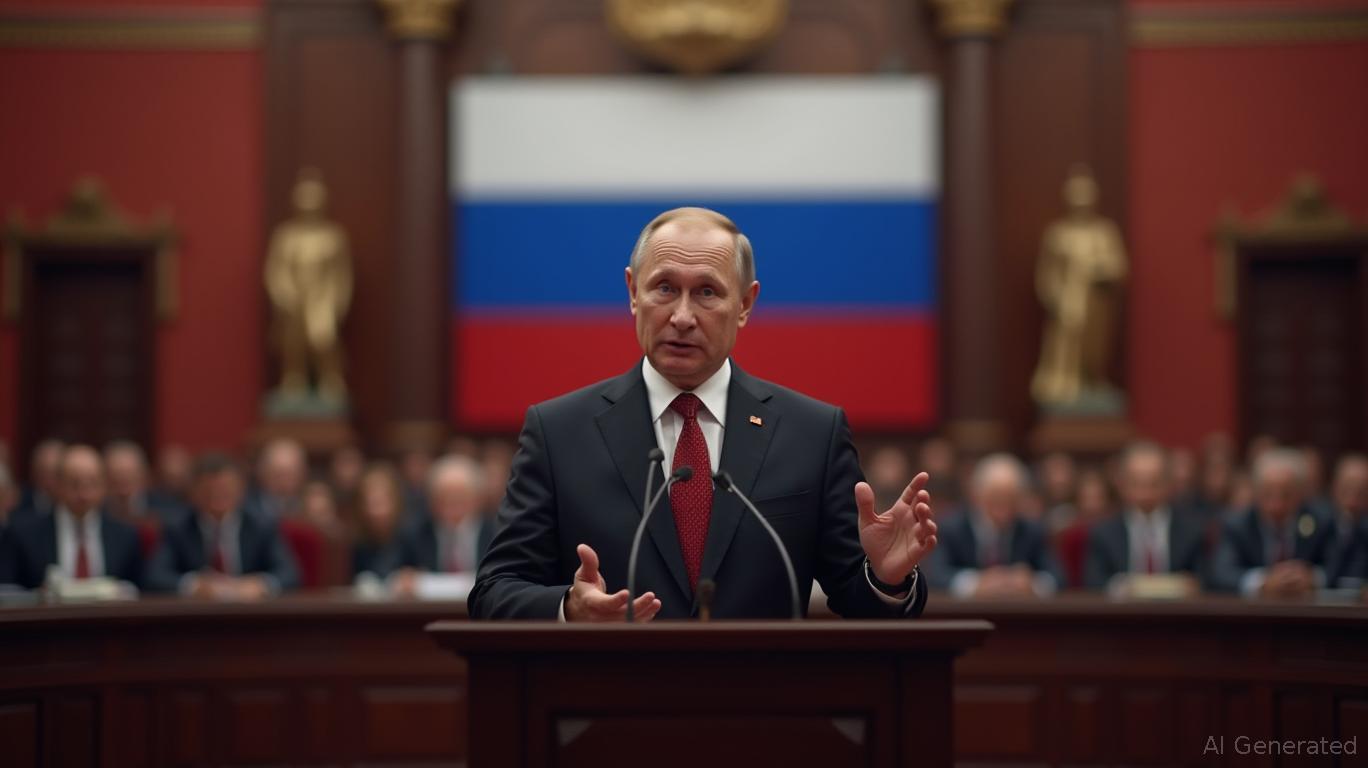Fed Navigates Uncertainty as Data-Dependent Rate Decisions Hindered by Shutdown
- The Fed's 25-basis-point rate cut reduced 2025 easing expectations, with December cut odds at 69.8% amid hawkish signals and FOMC divisions. - A split FOMC vote highlighted inflation-labor market balancing struggles, as core inflation remains 2.7% above the 2% target despite trade truce measures. - Quantitative tightening ends by December 1 amid U.S. government shutdown, complicating data-driven policymaking and increasing December cut uncertainty. - Political pressures mount with Trump criticizing Powel
The U.S. Federal Reserve's recent decision to lower interest rates by 25 basis points has led to a significant shift in market forecasts for additional rate cuts in 2025. After the policy meeting on October 28-29, the likelihood of a rate cut in December is now at 69.8%, a notable drop from the near certainty seen earlier this year, according to

The Fed's move to set rates between 3.75% and 4.00% was marked by a deeply divided FOMC. Governor Stephen Miran preferred a larger 50-basis-point cut, while Kansas City Fed President Jeff Schmid opposed any reduction, according to FXStreet. This marks the third time since 1990 the committee has seen such disagreement, highlighting the challenge of managing inflation risks while the job market slows. Powell has repeatedly cautioned about "potential risks to employment," prompting investors to lower the odds of a December cut to 70%, based on CME FedWatch figures.
The Fed's policy adjustment comes amid ongoing economic uncertainty. A one-year trade agreement between the U.S. and China, announced just before the rate decision, has slightly improved risk appetite but hasn't eased persistent inflation. The deal, which includes tariff reductions and relaxed export controls, has helped reduce global trade friction, yet core inflation remains at 2.7%, above the Fed's 2% goal, as reported by Hurriyet Daily News. At the same time, Switzerland's economy has shown signs of recovery, with the October ZEW Expectations Index rising to -7.7, illustrating uneven global growth patterns, according to FXStreet.
Zawya.>The Fed's latest action also signals the conclusion of its quantitative tightening (QT) initiative, with the reduction of securities holdings set to end on December 1, per Hurriyet Daily News. This step is intended to ensure sufficient liquidity as the central bank operates with limited economic data due to the ongoing U.S. government shutdown. Powell compared the current policy environment to "driving through fog" and indicated a cautious stance for December, as covered by Zawya.
Evrimagaci.>Political factors are adding further complexity to the Fed's decisions. President Donald Trump has openly criticized Powell, calling him "Jerome 'Too Late' Powell," and has suggested he may replace him before his term ends in May 2026, according to Evrimagaci. While the president's push for lower rates fits his economic strategy, it conflicts with the Fed's responsibility to maintain stable prices and full employment.
TradingView.>Currently, markets estimate a 68% chance that rates will remain unchanged at the December meeting, based on the latest FedWatch data cited by TradingView. Experts believe the Fed may adopt a more cautious, wait-and-see approach, with two 25-basis-point cuts anticipated in 2026. The central bank's future decisions will depend on inflation trends and whether the government shutdown ends, allowing for the release of essential economic reports.
Disclaimer: The content of this article solely reflects the author's opinion and does not represent the platform in any capacity. This article is not intended to serve as a reference for making investment decisions.
You may also like
Mortgage Rates Remain Tied to Bond Market, Not Federal Reserve Decisions
- U.S. mortgage rates fell to 6.4% in late October 2025 after Fed's 50-basis-point rate cuts in September and October. - Experts predict stable rates tied to bond markets, not Fed actions, as Treasury yields near multi-year lows. - Market priced in two more Fed cuts by year-end, but Powell's cautious stance caused temporary rate spikes post-October meeting. - Historical data shows Fed cuts often fail to lower mortgage rates due to bond yields and inflation expectations dominance. - Analysts warn of potenti

Advisory Connection or Hands-on Involvement? CZ Faces Scrutiny Over Kyrgyzstan Crypto Bank
- CZ Zhao denied proposing Kyrgyzstan's Bereket Bank, clarifying his role as an advisor, not operator, per Coinotag. - President Japarov credited CZ for inspiring the bank's creation, though CZ emphasized no direct involvement in its establishment. - Kyrgyzstan's crypto initiatives include a som-pegged stablecoin and Binance partnerships, aligning with its digital asset hub ambitions. - The dispute highlights challenges in distinguishing advisory roles from operational ties in international crypto collabor

XRP News Today: Major Institutions Embrace Blockchain, Transforming Assets into Tokens for Clearer Investment Opportunities.
- Franklin Templeton joins tokenized fund trend, leveraging blockchain to enhance institutional access to alternative assets. - JPMorgan and Securitize-BNY Mellon partnerships demonstrate tokenization streamlining private equity and structured credit markets. - XRP ETF regulatory clarity and RLUSD's $900M growth highlight maturing digital finance infrastructure with cross-border appeal. - 2025 poised as crypto integration milestone year, driven by institutional adoption, stablecoin adoption, and regulatory

Fortress Ruble: Russia Closes Crypto Access to Bolster Digital Independence
- Russia's central bank bans domestic crypto payments, prioritizing its digital ruble CBDC launch by 2026 to reinforce financial sovereignty. - Stablecoins are allowed for international trade but prohibited domestically, balancing innovation with central bank control over monetary policy. - The policy aims to prevent crypto-driven financial instability, restrict domestic crypto use to speculation, and align with China's state-controlled CBDC model. - Critics argue the ban stifles innovation, while proponen
